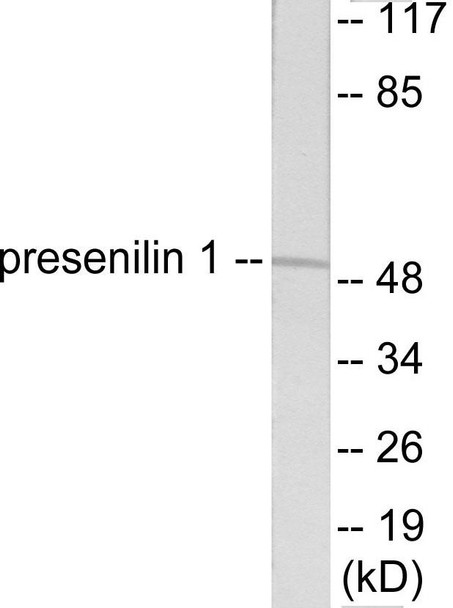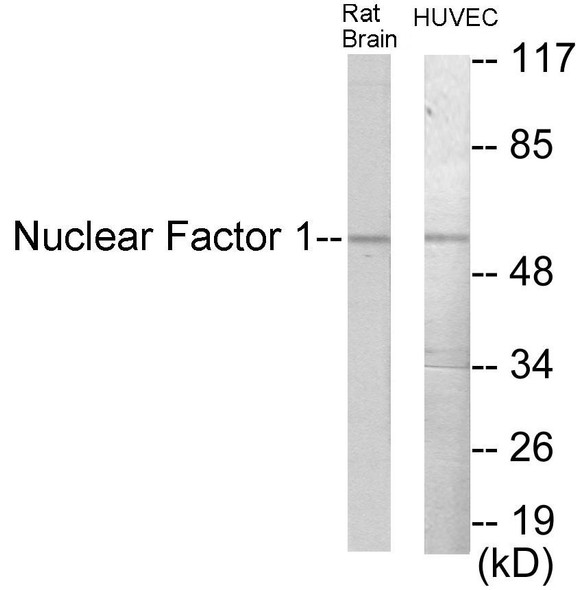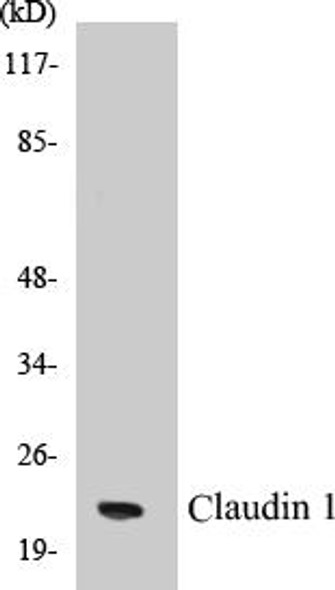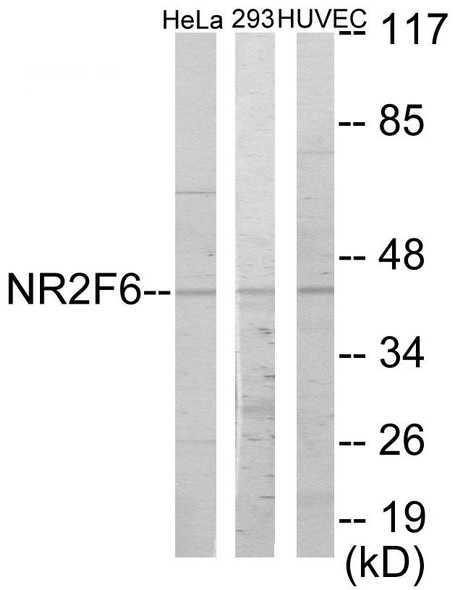Description
Presenilin 1 Colorimetric Cell-Based ELISA
The Presenilin 1 Colorimetric Cell-Based ELISA Kit is a powerful tool for detecting and quantifying levels of Presenilin 1 in cell lysates and tissue samples. This kit offers high sensitivity and specificity, allowing for precise measurement of Presenilin 1 levels in various experimental settings.Presenilin 1 is a key protein involved in the processing of amyloid precursor protein and the generation of amyloid beta peptides, which are implicated in the pathogenesis of Alzheimer's disease.
Understanding the role of Presenilin 1 in disease progression is crucial for developing effective therapies for Alzheimer's and other neurodegenerative disorders.With this ELISA kit, researchers can accurately measure Presenilin 1 levels in cell cultures and tissue samples, providing valuable insights into the mechanisms underlying neurodegenerative diseases. Trust in the Presenilin 1 Colorimetric Cell-Based ELISA Kit for reliable and reproducible results in your research endeavors.
| Product Name: | Presenilin 1 Colorimetric Cell-Based ELISA |
| Product Code: | CBCAB00916 |
| ELISA Type: | Cell-Based |
| Target: | Presenilin 1 |
| Reactivity: | Human |
| Dynamic Range: | > 5000 Cells |
| Detection Method: | Colorimetric 450 nmStorage/Stability:4°C/6 Months |
| Format: | 96-Well Microplate |
The Presenilin 1 Colorimetric Cell-Based ELISA Kit is a convenient, lysate-free, high throughput and sensitive assay kit that can detect Presenilin 1 protein expression profile in cells. The kit can be used for measuring the relative amounts of Presenilin 1 in cultured cells as well as screening for the effects that various treatments, inhibitors (ie siRNA or chemicals), or activators have on Presenilin 1.
Qualitative determination of Presenilin 1 concentration is achieved by an indirect ELISA format. In essence, Presenilin 1 is captured by Presenilin 1-specific primary antibodies while the HRP-conjugated secondary antibodies bind the Fc region of the primary antibody. Through this binding, the HRP enzyme conjugated to the secondary antibody can catalyze a colorimetric reaction upon substrate addition. Due to the qualitative nature of the Cell-Based ELISA, multiple normalization methods are needed:
| 1. | A monoclonal antibody specific for human GAPDH is included to serve as an internal positive control in normalizing the target absorbance values. |
| 2. | Following the colorimetric measurement of HRP activity via substrate addition, the Crystal Violet whole-cell staining method may be used to determine cell density. After staining, the results can be analysed by normalizing the absorbance values to cell amounts, by which the plating difference can be adjusted. |
| Database Information: | Gene ID: 5663, UniProt ID: P49768, OMIM: 104311, Unigene: Hs.3260 |
| Gene Symbol: | PSEN1 |
| Sub Type: | None |
| UniProt Protein Function: | PSEN1: probable catalytic subunit of the gamma-secretase complex, an endoprotease complex that catalyzes the intramembrane cleavage of integral membrane proteins such as Notch receptors and APP (beta-amyloid precursor protein). Requires the other members of the gamma-secretase complex to have a protease activity. May play a role in intracellular signaling and gene expression or in linking chromatin to the nuclear membrane. Regulates epithelial- cadherin function. Five alternative splice isoforms have been identified. |
| UniProt Protein Details: | Protein type:Cell surface; Protease; Mitochondrial; Membrane protein, integral; Membrane protein, multi-pass; EC 3.4.23.- Chromosomal Location of Human Ortholog: 14q24.3 Cellular Component: Golgi apparatus; nuclear outer membrane; centrosome; cell surface; smooth endoplasmic reticulum; mitochondrion; lysosomal membrane; integral to plasma membrane; integral to membrane; lipid raft; ciliary rootlet; kinetochore; cell soma; membrane; perinuclear region of cytoplasm; mitochondrial inner membrane; apical plasma membrane; cytoplasmic vesicle; dendritic shaft; neuromuscular junction; endoplasmic reticulum membrane; nuclear membrane; rough endoplasmic reticulum; endoplasmic reticulum; cell cortex; Z disc; Golgi membrane; growth cone; axon Molecular Function:protein binding; cadherin binding; calcium channel activity; endopeptidase activity; beta-catenin binding; aspartic-type endopeptidase activity; PDZ domain binding Biological Process: positive regulation of catalytic activity; extracellular matrix organization and biogenesis; activation of MAPKK activity; positive regulation of apoptosis; beta-amyloid formation; regulation of synaptic plasticity; positive regulation of coagulation; Wnt receptor signaling pathway through beta-catenin; choline transport; T cell receptor signaling pathway; T cell activation during immune response; post-embryonic development; mitochondrial transport; extracellular matrix disassembly; positive regulation of MAP kinase activity; epithelial cell proliferation; cell-cell adhesion; negative regulation of axonogenesis; negative regulation of neuron apoptosis; embryonic limb morphogenesis; autophagic vacuole formation; somitogenesis; skin morphogenesis; regulation of phosphorylation; Notch receptor processing; negative regulation of ubiquitin-protein ligase activity; neuron development; Cajal-Retzius cell differentiation; hemopoietic progenitor cell differentiation; response to oxidative stress; negative regulation of apoptosis; regulation of synaptic transmission, glutamatergic; protein maturation; neuron migration; protein amino acid glycosylation; cell fate specification; myeloid dendritic cell differentiation; negative regulation of transcription from RNA polymerase II promoter; protein transport; amyloid precursor protein catabolic process; beta-amyloid metabolic process; regulation of resting membrane potential; brain morphogenesis; heart looping; positive regulation of receptor recycling; dorsoventral neural tube patterning; blood vessel development; Notch signaling pathway; L-glutamate transport; thymus development; membrane protein ectodomain proteolysis; memory; negative regulation of epidermal growth factor receptor activity; smooth endoplasmic reticulum calcium ion homeostasis; endoplasmic reticulum calcium ion homeostasis; neuron apoptosis; cerebral cortex cell migration; skeletal morphogenesis; regulation of protein binding; positive regulation of proteasomal ubiquitin-dependent protein catabolic process; protein processing; synaptic vesicle targeting; response to DNA damage stimulus Disease: Pick Disease Of Brain; Alzheimer Disease 3; Frontotemporal Dementia; Acne Inversa, Familial, 3; Cardiomyopathy, Dilated, 1u |
| NCBI Summary: | Alzheimer's disease (AD) patients with an inherited form of the disease carry mutations in the presenilin proteins (PSEN1; PSEN2) or in the amyloid precursor protein (APP). These disease-linked mutations result in increased production of the longer form of amyloid-beta (main component of amyloid deposits found in AD brains). Presenilins are postulated to regulate APP processing through their effects on gamma-secretase, an enzyme that cleaves APP. Also, it is thought that the presenilins are involved in the cleavage of the Notch receptor, such that they either directly regulate gamma-secretase activity or themselves are protease enzymes. Several alternatively spliced transcript variants encoding different isoforms have been identified for this gene, the full-length nature of only some have been determined. [provided by RefSeq, Aug 2008] |
| UniProt Code: | P49768 |
| NCBI GenInfo Identifier: | 1709856 |
| NCBI Gene ID: | 5663 |
| NCBI Accession: | P49768.1 |
| UniProt Secondary Accession: | P49768,O95465, Q14762, Q15719, Q15720, Q96P33, Q9UIF0 B2R6D3, |
| UniProt Related Accession: | P49768 |
| Molecular Weight: | 48,997 Da |
| NCBI Full Name: | Presenilin-1 |
| NCBI Synonym Full Names: | presenilin 1 |
| NCBI Official Symbol: | PSEN1 |
| NCBI Official Synonym Symbols: | AD3; FAD; PS1; PS-1; S182 |
| NCBI Protein Information: | presenilin-1 |
| UniProt Protein Name: | Presenilin-1 |
| UniProt Synonym Protein Names: | Protein S182Cleaved into the following 3 chains:Presenilin-1 NTF subunit; Presenilin-1 CTF subunit; Presenilin-1 CTF12; PS1-CTF12 |
| Protein Family: | FHA domain-containing protein |
| UniProt Gene Name: | PSEN1 |
| UniProt Entry Name: | PSN1_HUMAN |
| Component | Quantity |
| 96-Well Cell Culture Clear-Bottom Microplate | 2 plates |
| 10X TBS | 24 mL |
| Quenching Buffer | 24 mL |
| Blocking Buffer | 50 mL |
| 15X Wash Buffer | 50 mL |
| Primary Antibody Diluent | 12 mL |
| 100x Anti-Phospho Target Antibody | 60 µL |
| 100x Anti-Target Antibody | 60 µL |
| Anti-GAPDH Antibody | 60 µL |
| HRP-Conjugated Anti-Rabbit IgG Antibody | 12 mL |
| HRP-Conjugated Anti-Mouse IgG Antibody | 12 mL |
| SDS Solution | 12 mL |
| Stop Solution | 24 mL |
| Ready-to-Use Substrate | 12 mL |
| Crystal Violet Solution | 12 mL |
| Adhesive Plate Seals | 2 seals |
The following materials and/or equipment are NOT provided in this kit but are necessary to successfully conduct the experiment:
- Microplate reader able to measure absorbance at 450 nm and/or 595 nm for Crystal Violet Cell Staining (Optional)
- Micropipettes with capability of measuring volumes ranging from 1 µL to 1 ml
- 37% formaldehyde (Sigma Cat# F-8775) or formaldehyde from other sources
- Squirt bottle, manifold dispenser, multichannel pipette reservoir or automated microplate washer
- Graph paper or computer software capable of generating or displaying logarithmic functions
- Absorbent papers or vacuum aspirator
- Test tubes or microfuge tubes capable of storing ≥1 ml
- Poly-L-Lysine (Sigma Cat# P4832 for suspension cells)
- Orbital shaker (optional)
- Deionized or sterile water
*Note: Protocols are specific to each batch/lot. For the correct instructions please follow the protocol included in your kit.
| Step | Procedure |
| 1. | Seed 200 µL of 20,000 adherent cells in culture medium in each well of a 96-well plate. The plates included in the kit are sterile and treated for cell culture. For suspension cells and loosely attached cells, coat the plates with 100 µL of 10 µg/ml Poly-L-Lysine (not included) to each well of a 96-well plate for 30 minutes at 37°C prior to adding cells. |
| 2. | Incubate the cells for overnight at 37°C, 5% CO2. |
| 3. | Treat the cells as desired. |
| 4. | Remove the cell culture medium and rinse with 200 µL of 1x TBS, twice. |
| 5. | Fix the cells by incubating with 100 µL of Fixing Solution for 20 minutes at room temperature. The 4% formaldehyde is used for adherent cells and 8% formaldehyde is used for suspension cells and loosely attached cells. |
| 6. | Remove the Fixing Solution and wash the plate 3 times with 200 µL 1x Wash Buffer for five minutes each time with gentle shaking on the orbital shaker. The plate can be stored at 4°C for a week. |
| 7. | Add 100 µL of Quenching Buffer and incubate for 20 minutes at room temperature. |
| 8. | Wash the plate 3 times with 1x Wash Buffer for 5 minutes each time. |
| 9. | Add 200 µL of Blocking Buffer and incubate for 1 hour at room temperature. |
| 10. | Wash 3 times with 200 µL of 1x Wash Buffer for 5 minutes each time. |
| 11. | Add 50 µL of 1x primary antibodies (Anti-Presenilin 1 Antibody and/or Anti-GAPDH Antibody) to the corresponding wells, cover with Parafilm and incubate for 16 hours (overnight) at 4°C. If the target expression is known to be high, incubate for 2 hours at room temperature. |
| 12. | Wash 3 times with 200 µL of 1x Wash Buffer for 5 minutes each time. |
| 13. | Add 50 µL of 1x secondary antibodies (HRP-Conjugated AntiRabbit IgG Antibody or HRP-Conjugated Anti-Mouse IgG Antibody) to corresponding wells and incubate for 1.5 hours at room temperature. |
| 14. | Wash 3 times with 200 µL of 1x Wash Buffer for 5 minutes each time. |
| 15. | Add 50 µL of Ready-to-Use Substrate to each well and incubate for 30 minutes at room temperature in the dark. |
| 16. | Add 50 µL of Stop Solution to each well and read OD at 450 nm immediately using the microplate reader. |
(Additional Crystal Violet staining may be performed if desired – details of this may be found in the kit technical manual.)






